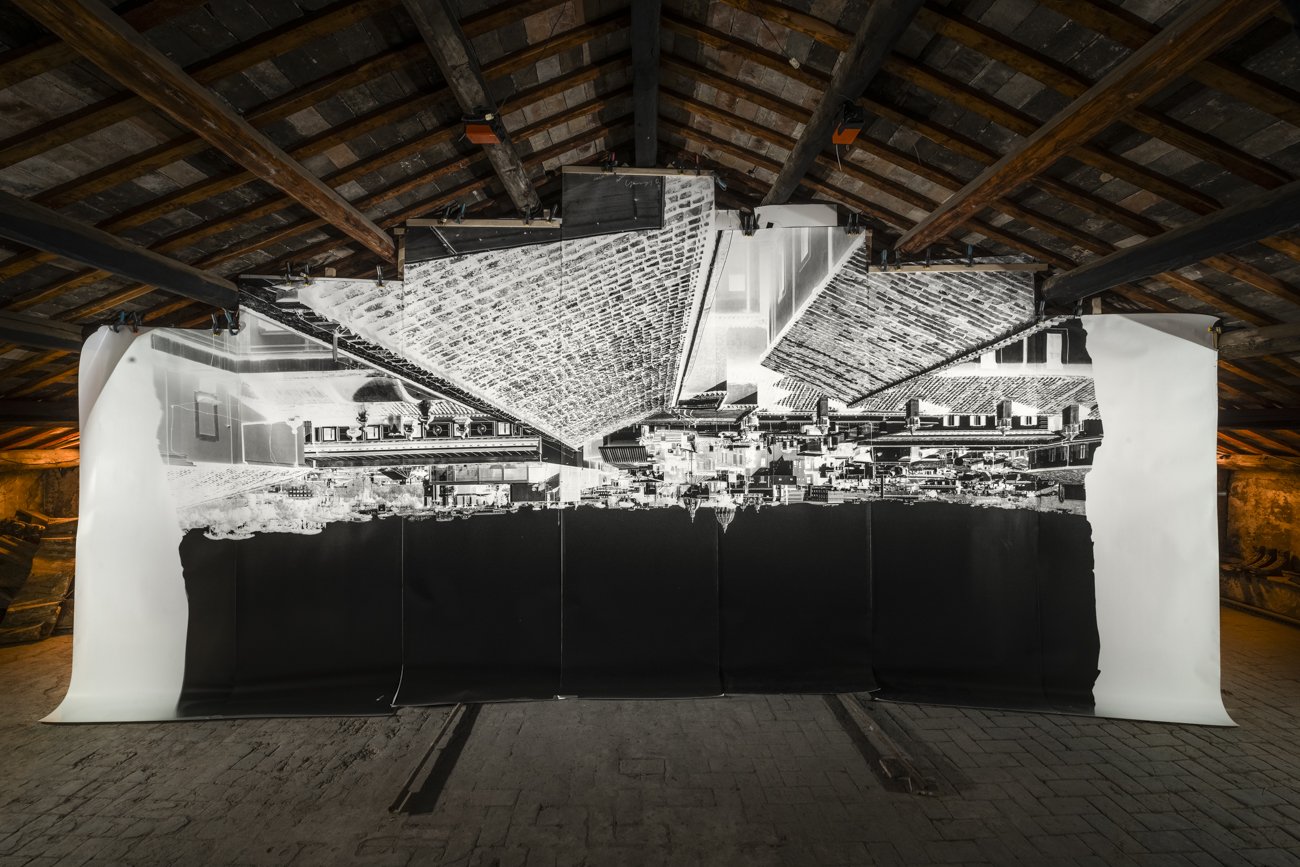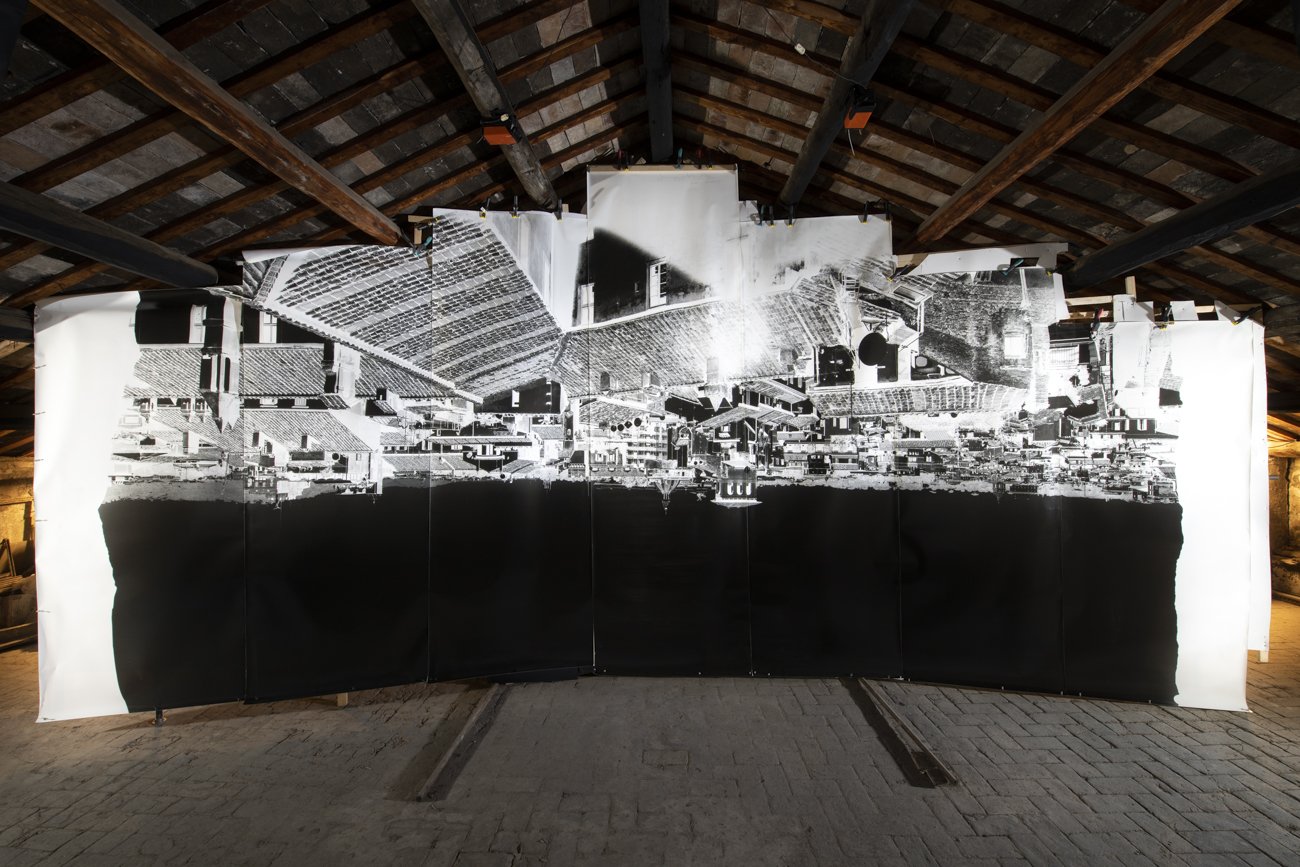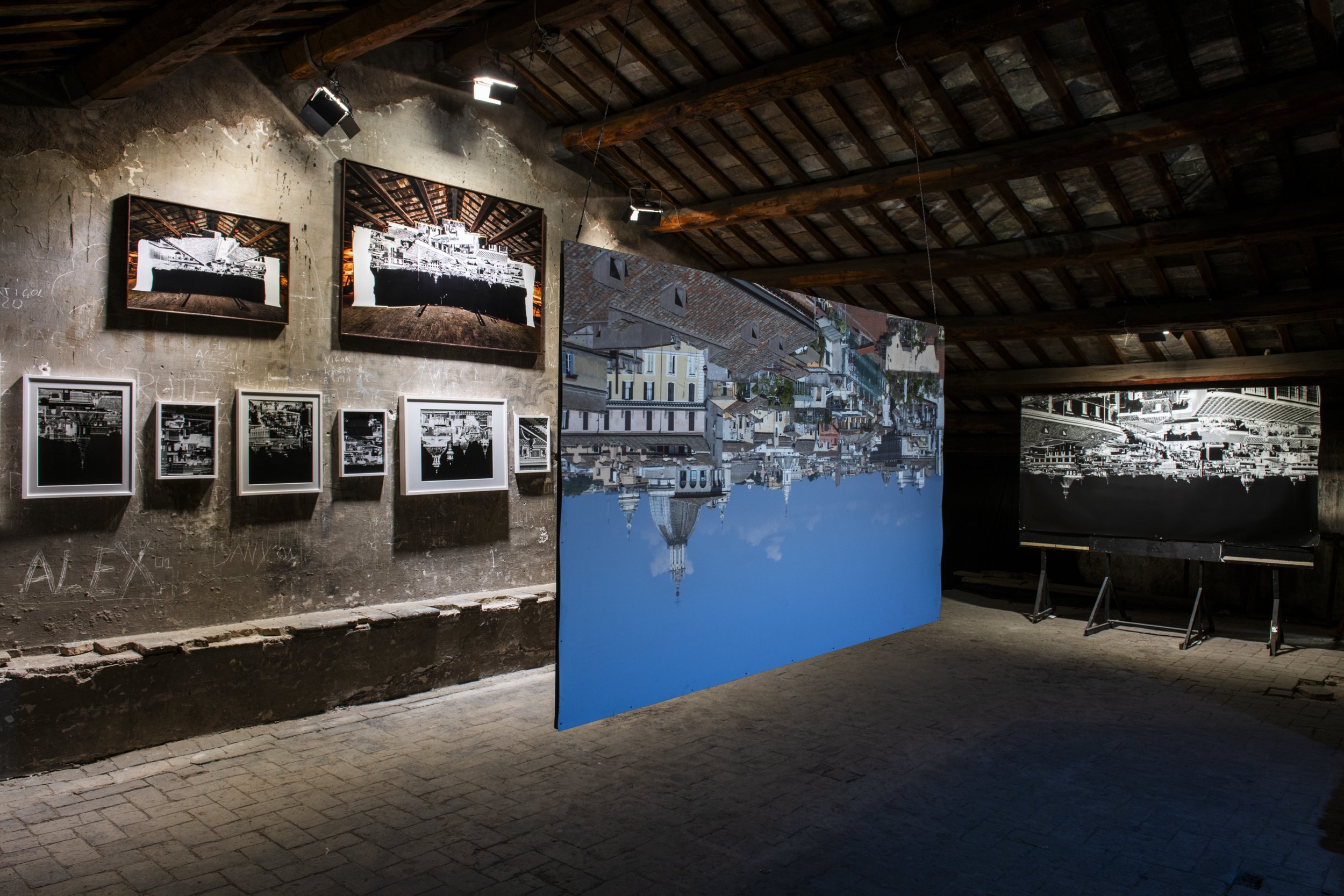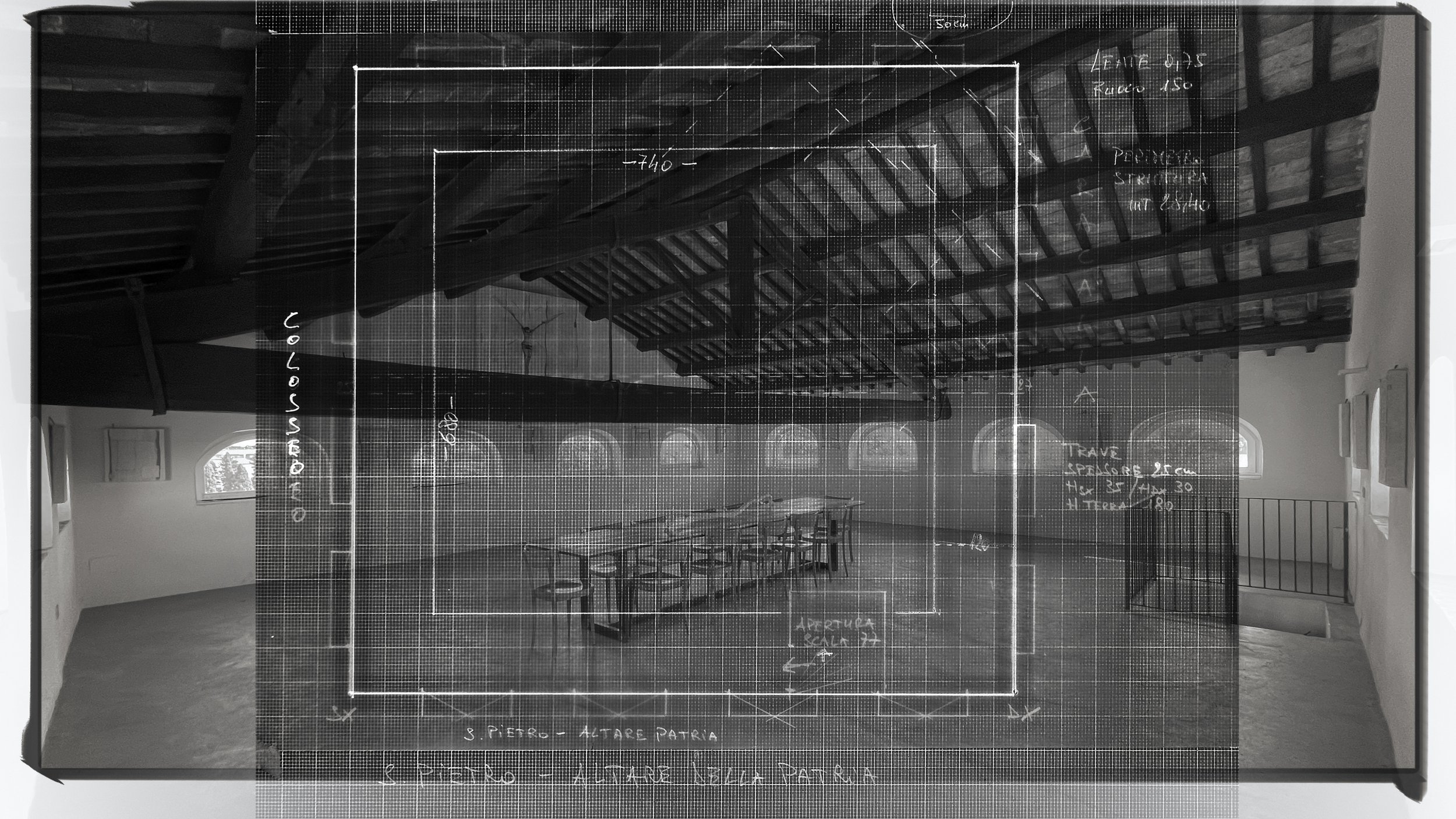
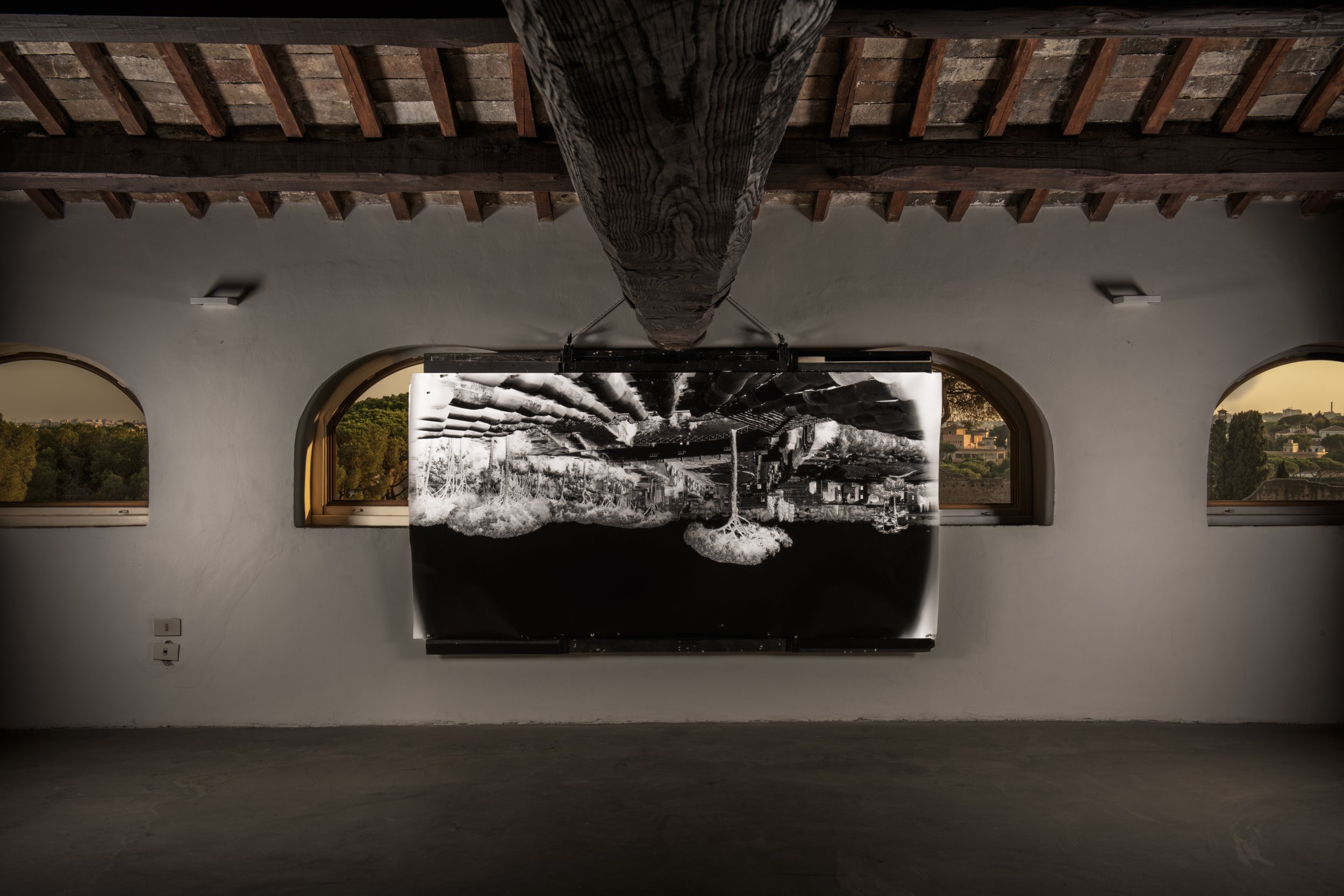
ROMA QUADRATA
PROGETTO IN CORSO D’OPERA
Convento di San Bonaventura al Palatino
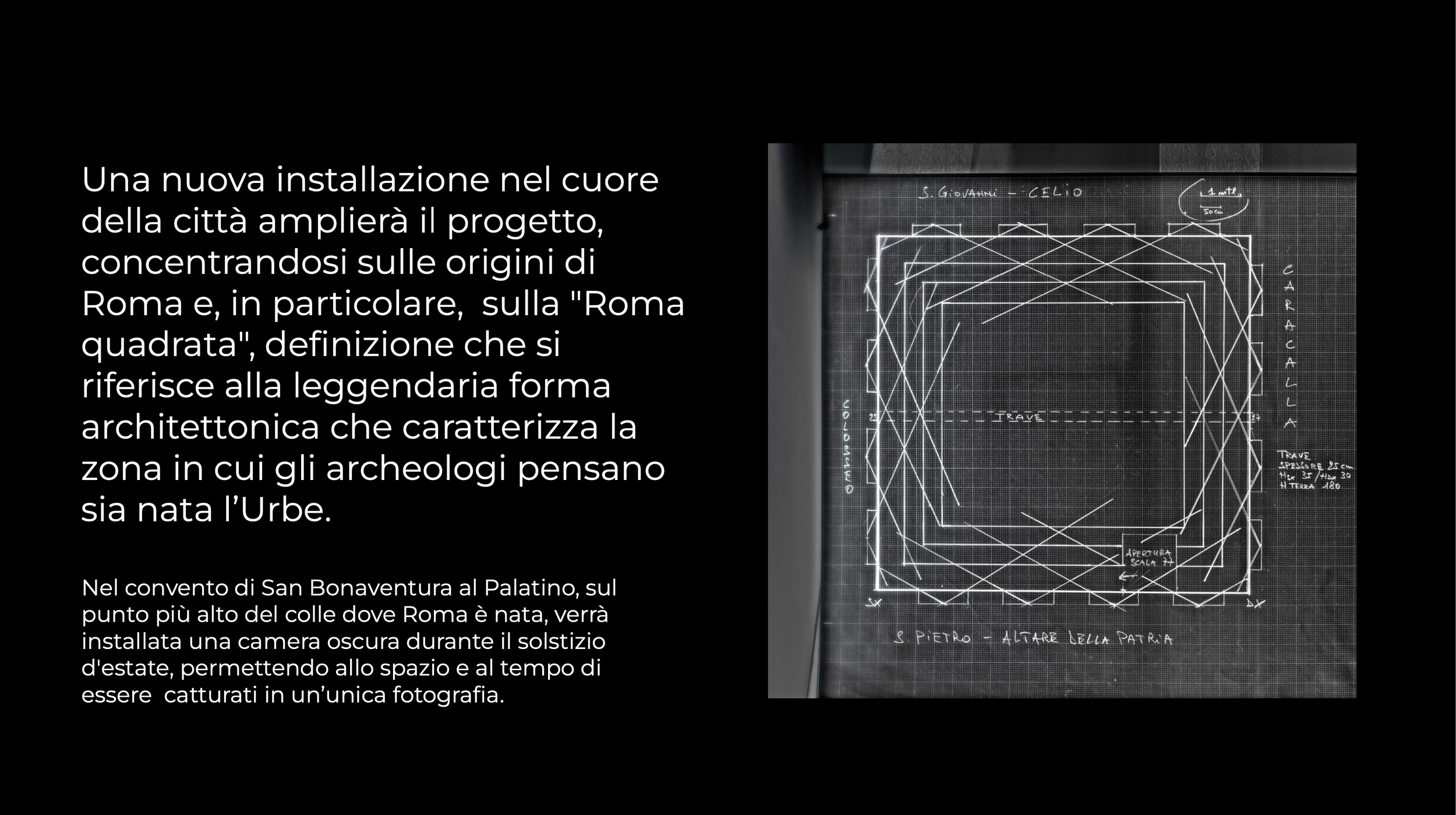
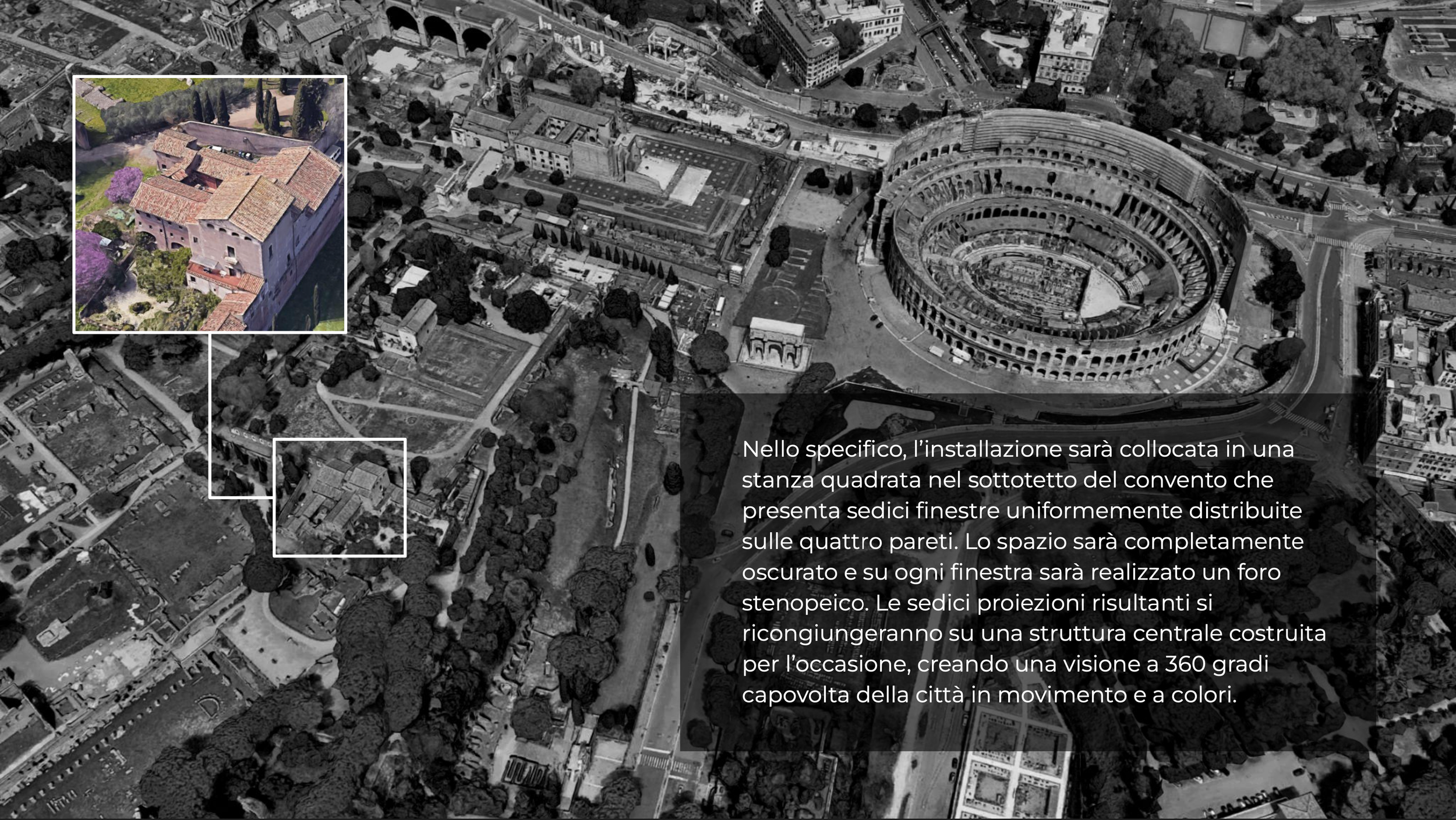
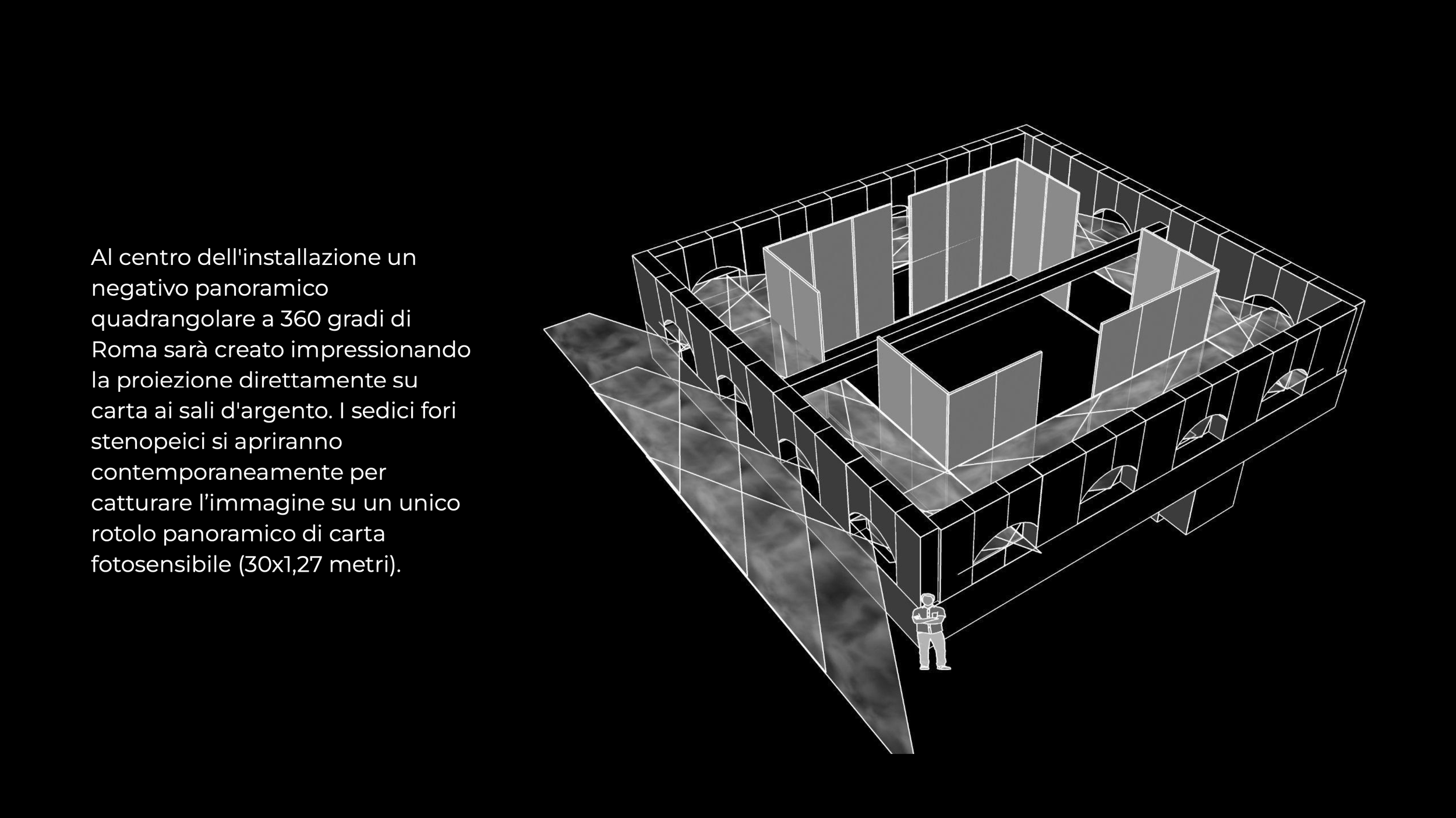
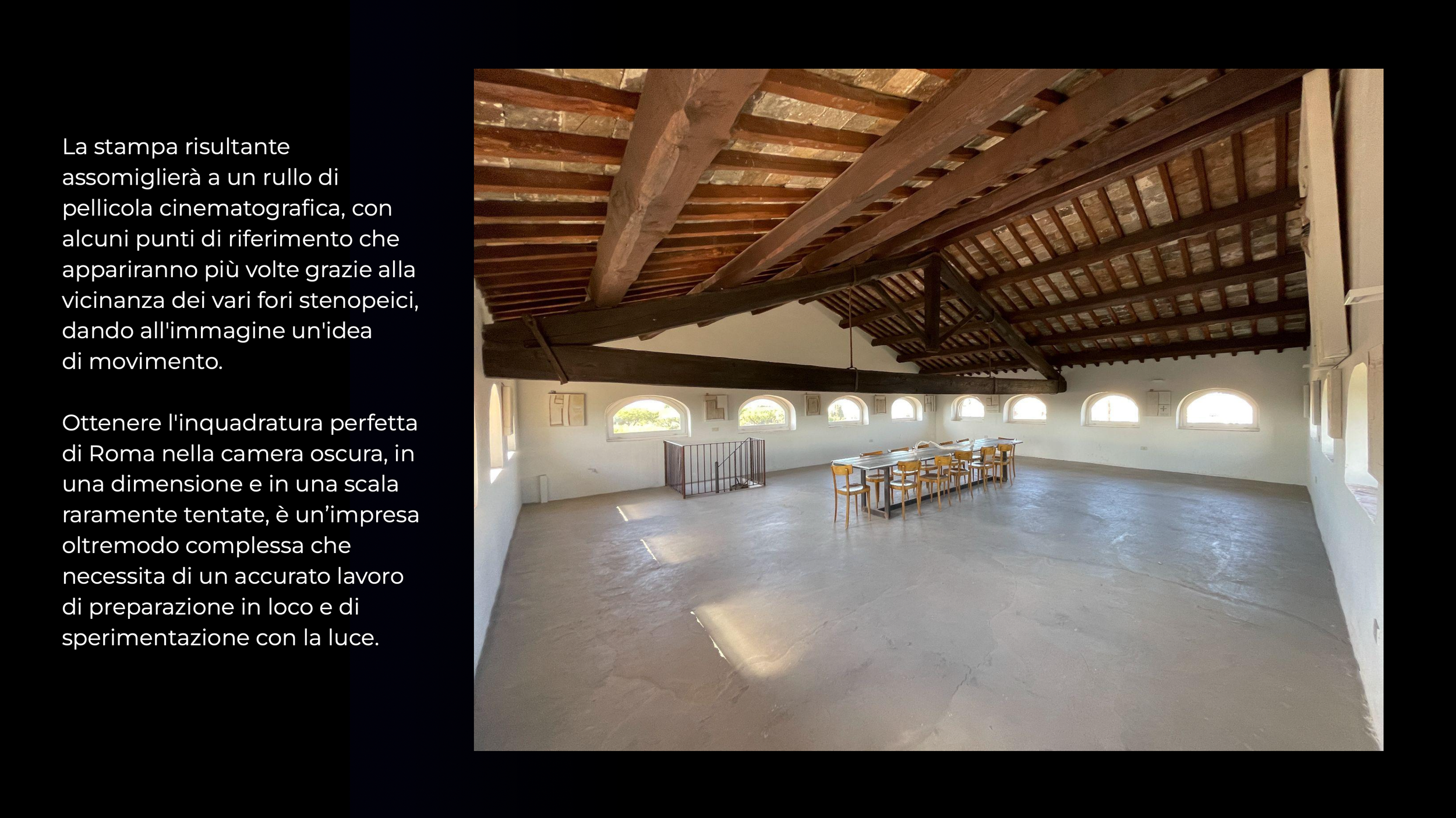
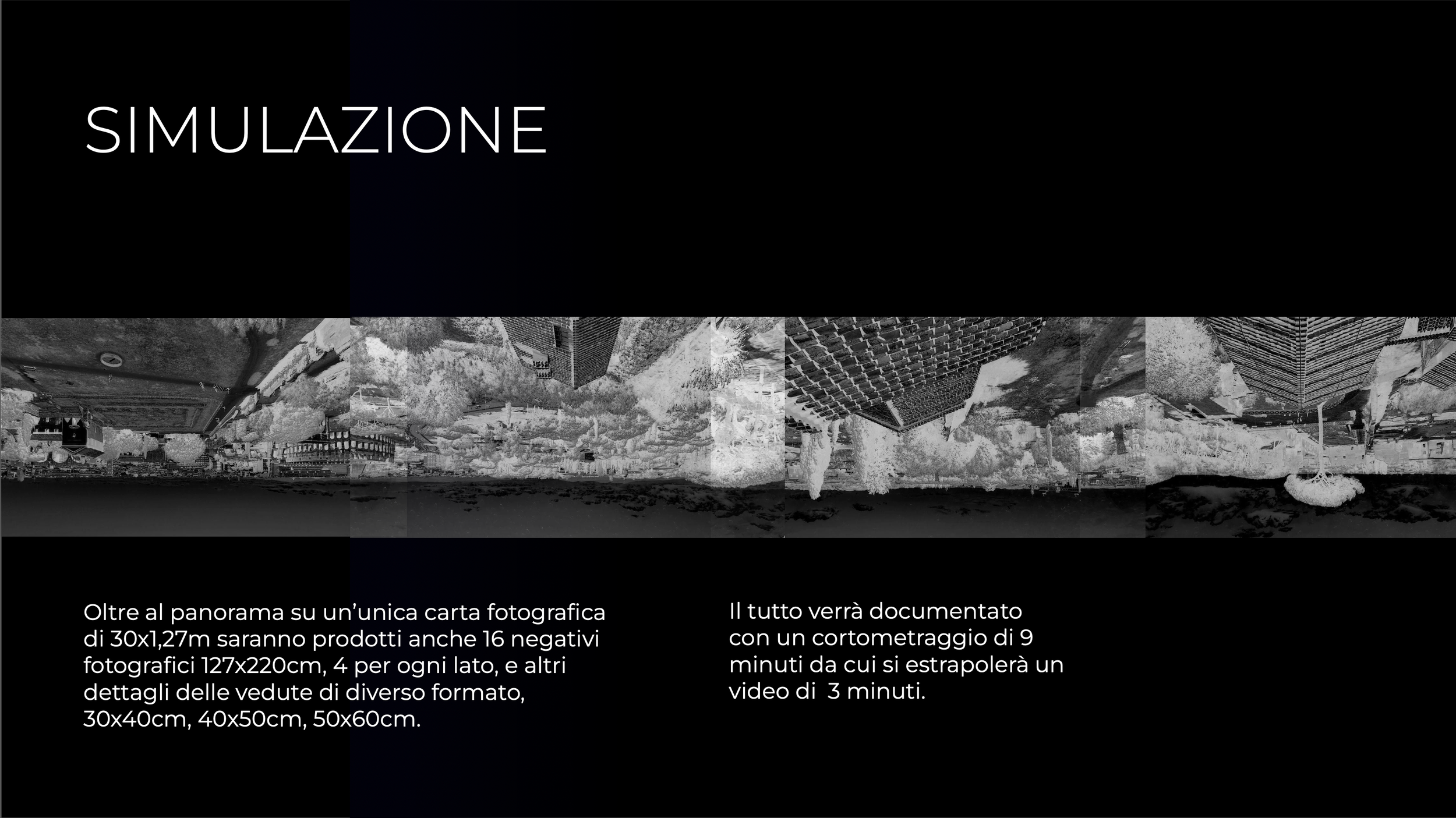


“Dico che, se una faccia d’uno edifizio o altra piazza o campagna che sia illuminata dal sole, arà al suo opposto un’abitazione, e in quella faccia che non vede il sole sia fatto uno spiraculo rotondo, che tutte le alluminate cose manderanno la loro similitudine per detto spiralculo e appariranno dentro all’abitazione nella contraria faccia, la quale vol essere bianca, e saranno lì appunto e sottosopra, e se per molti lochi di detta faccia facessi simili busi, simile effetto sarebbe per ciascuno.“
Leonardo Da Vinci, Codice Atlantico
My forthcoming installation, located in the heart of Rome, is an extension of the Roma: Camera Obscura project, this time delving into the origins of Rome and drawing on the concept of Roma Quadrata. This term alludes to the legendary architectural blueprint associated with the area archaeologists identify as the city's birthplace.
Within the precincts of the San Bonaventura convent atop Palatine Hill, where Rome's roots trace back, I've begun the foundations of a 360-degree camera obscura installation. To date, I’ve constructed a camera obscura installation at the site from which I’ve already realized numerous large-scale negative prints.
The final result will involve sixteen pinhole cameras distributed around a surface upon which I will capture a negative image in a single moment during the summer solstice, encapsulating both space and time within a single photograph.
Specifically, the installation will be placed in a square room in the attic of the convent, which has sixteen windows evenly distributed on the four walls. The space will be completely darkened, and a pinhole will be created on each window. The sixteen resulting projections will converge onto a central structure constructed for the occasion, creating an inverted 360-degree, colorful view of the city in motion.
The realization of this project has allowed me to travel backward as if I could return to the origins not only of my existence but also of the photographic medium and figurative art.
Some scholars consider it plausible that even in prehistoric caves, the physical phenomenon at the core of photography created natural camera obscuras, and that some cave paintings originated from the observation of the inverted external reality.

At the center of the installation, a 360-degree panoramic negative of Rome will be created by impressing the projection directly onto silver salts on paper. The sixteen pinhole apertures will open simultaneously to capture the image on a single panoramic roll of photosensitive paper (30x1.27 meters).
The resulting print will resemble a roll of cinematographic film, with some reference points appearing multiple times due to the proximity of the various pinhole apertures, giving the image a sense of motion.
Achieving the perfect framing of Rome in the darkroom, in a dimension and scale rarely attempted, is an extremely complex endeavor that requires meticulous on-site preparation and experimentation with light.
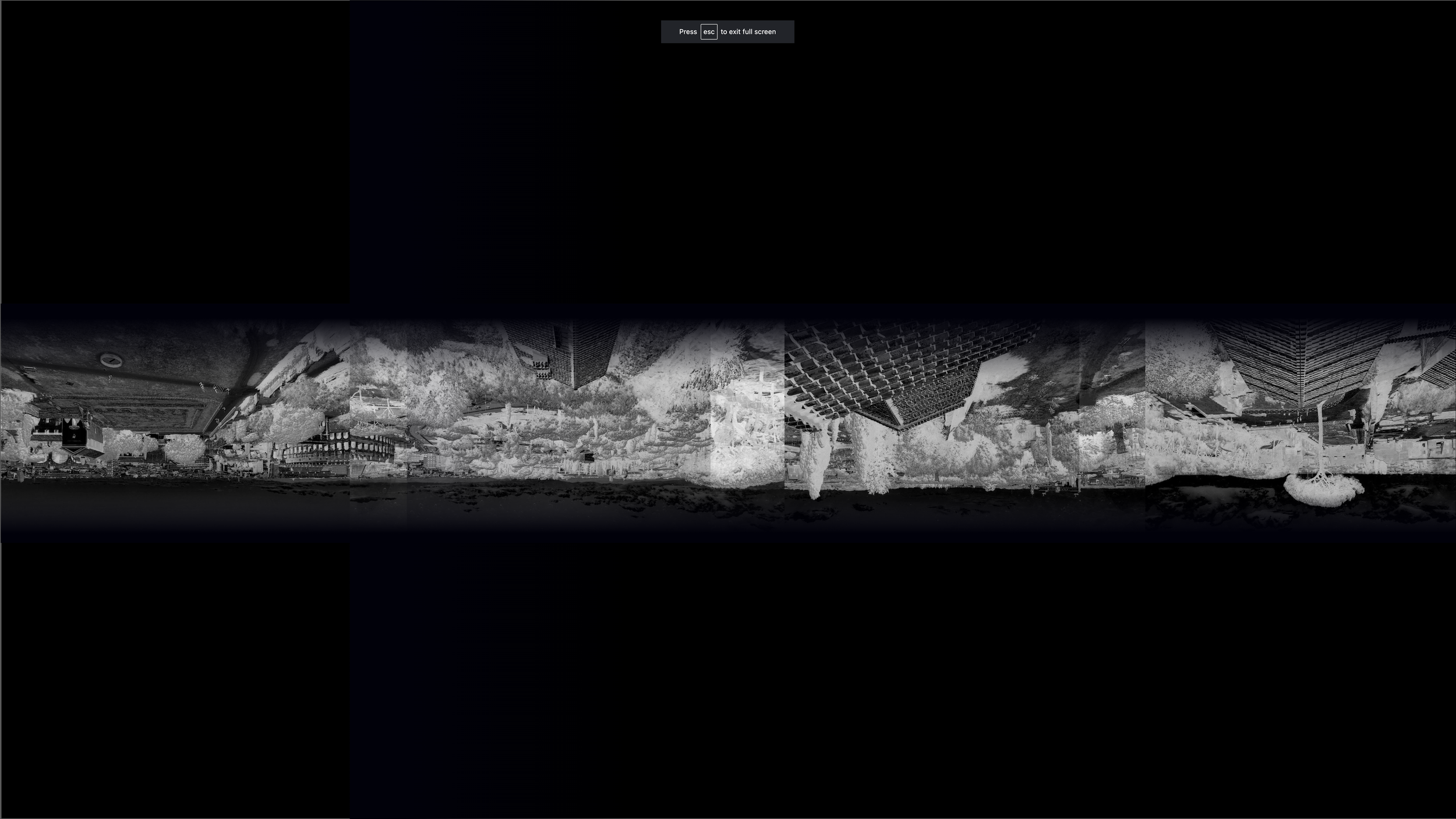
SIMULATION
In addition to the panoramic image on a single 30x1.27m photographic paper, 16 photographic negatives measuring 127x220cm, 4 for each side, and other details of the views in different sizes, 30x40cm, 40x50cm, 50x60cm, will also be produced.
The entire process will be documented with a 9-minute short film from which a 3-minute video will be extracted.
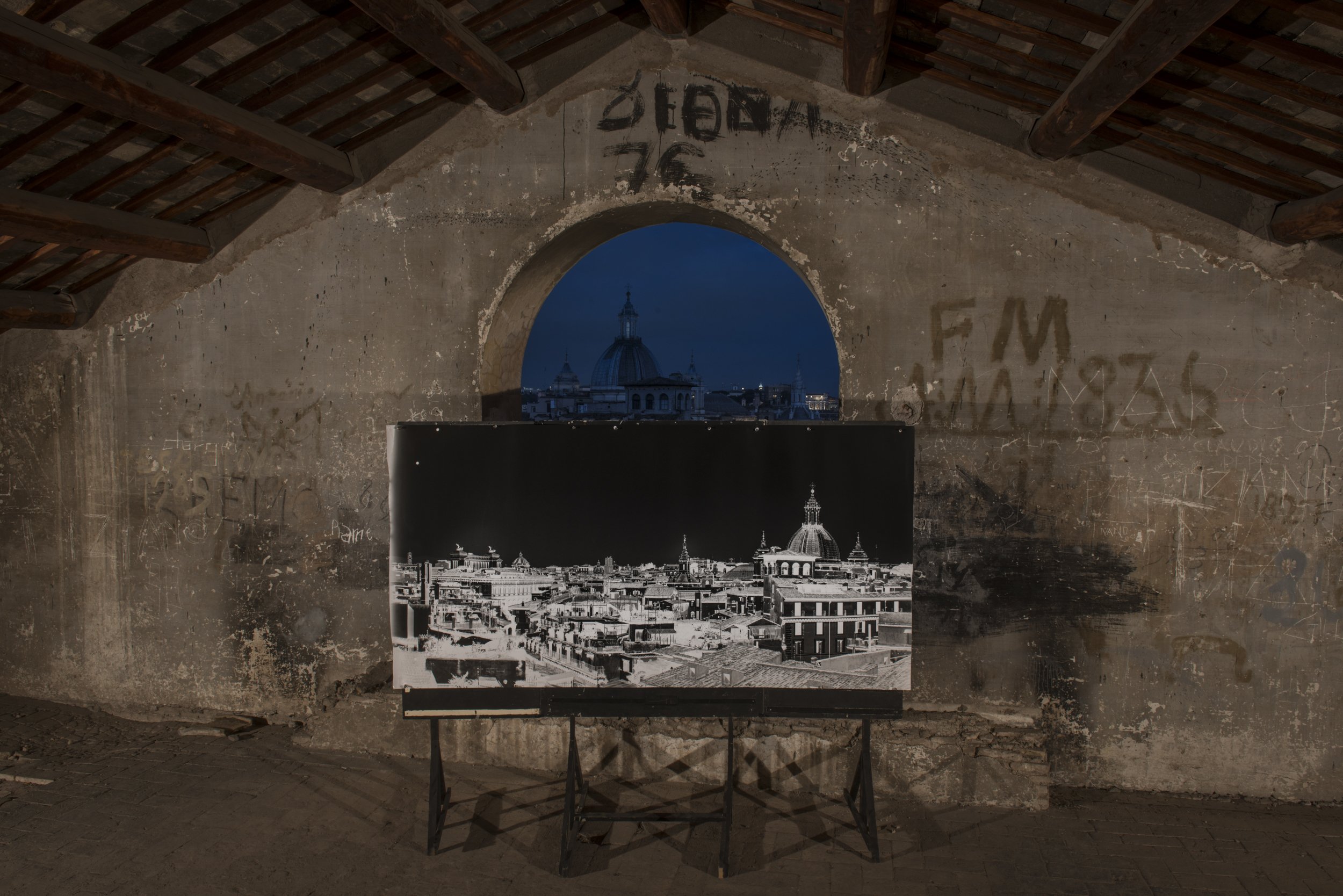
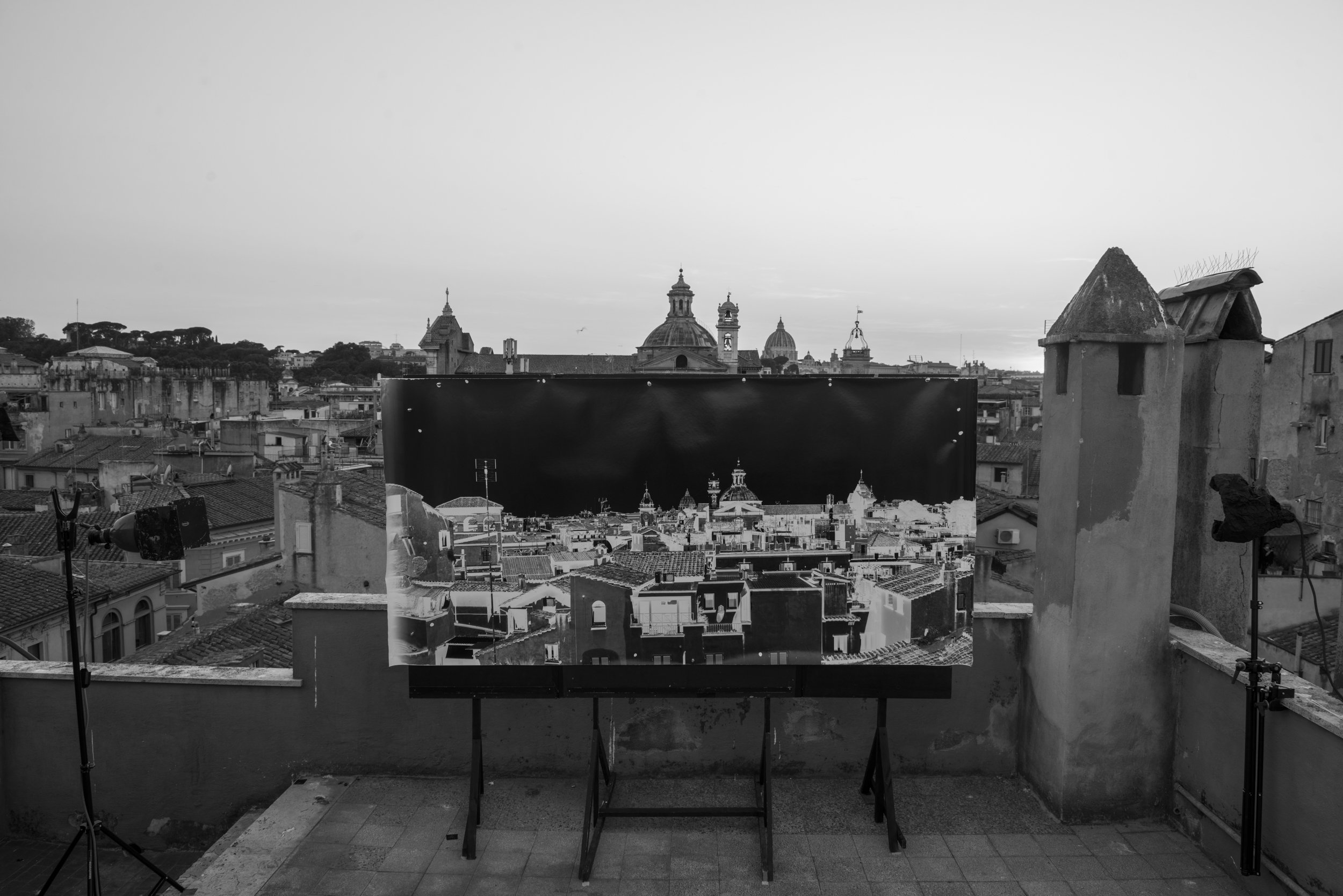
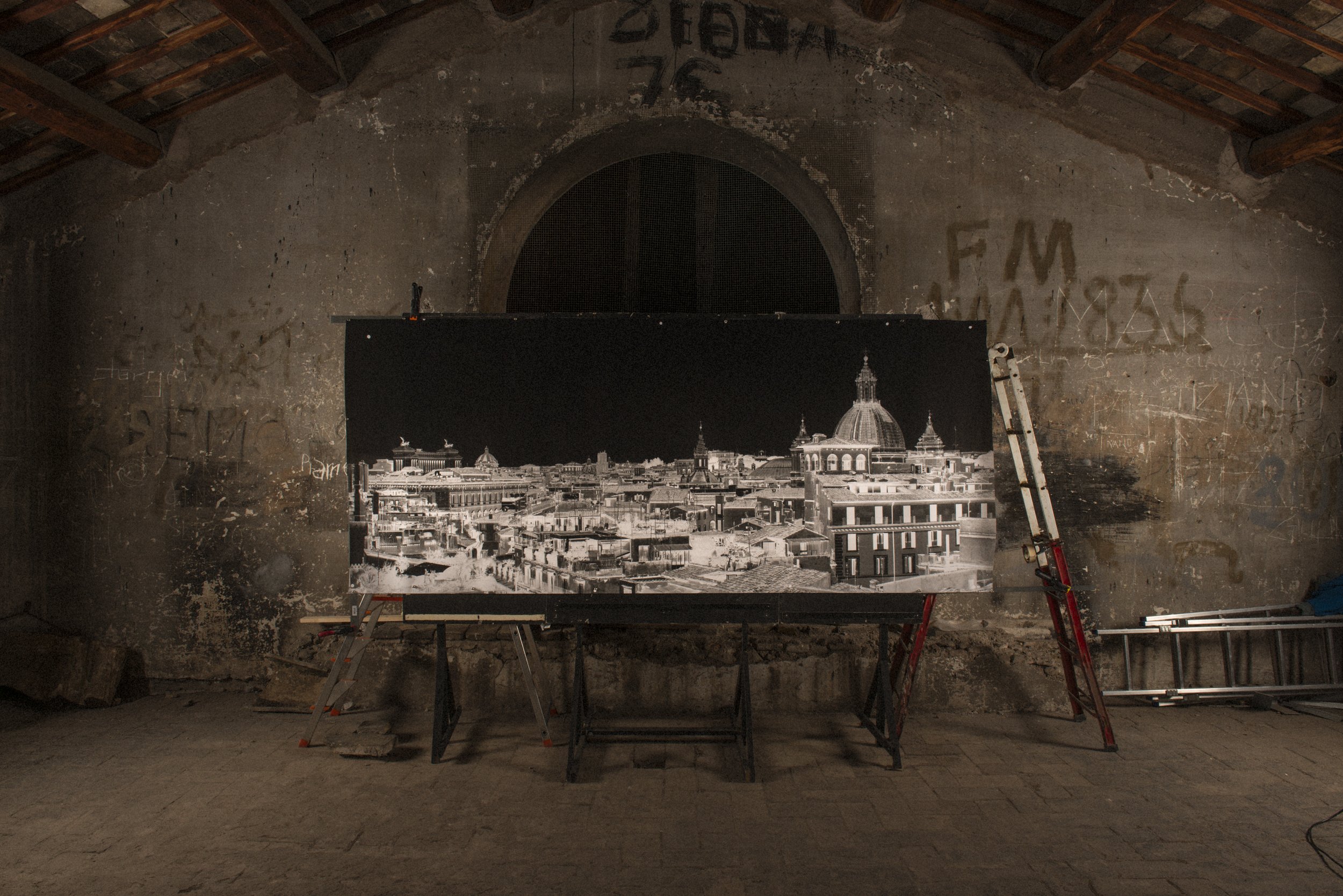
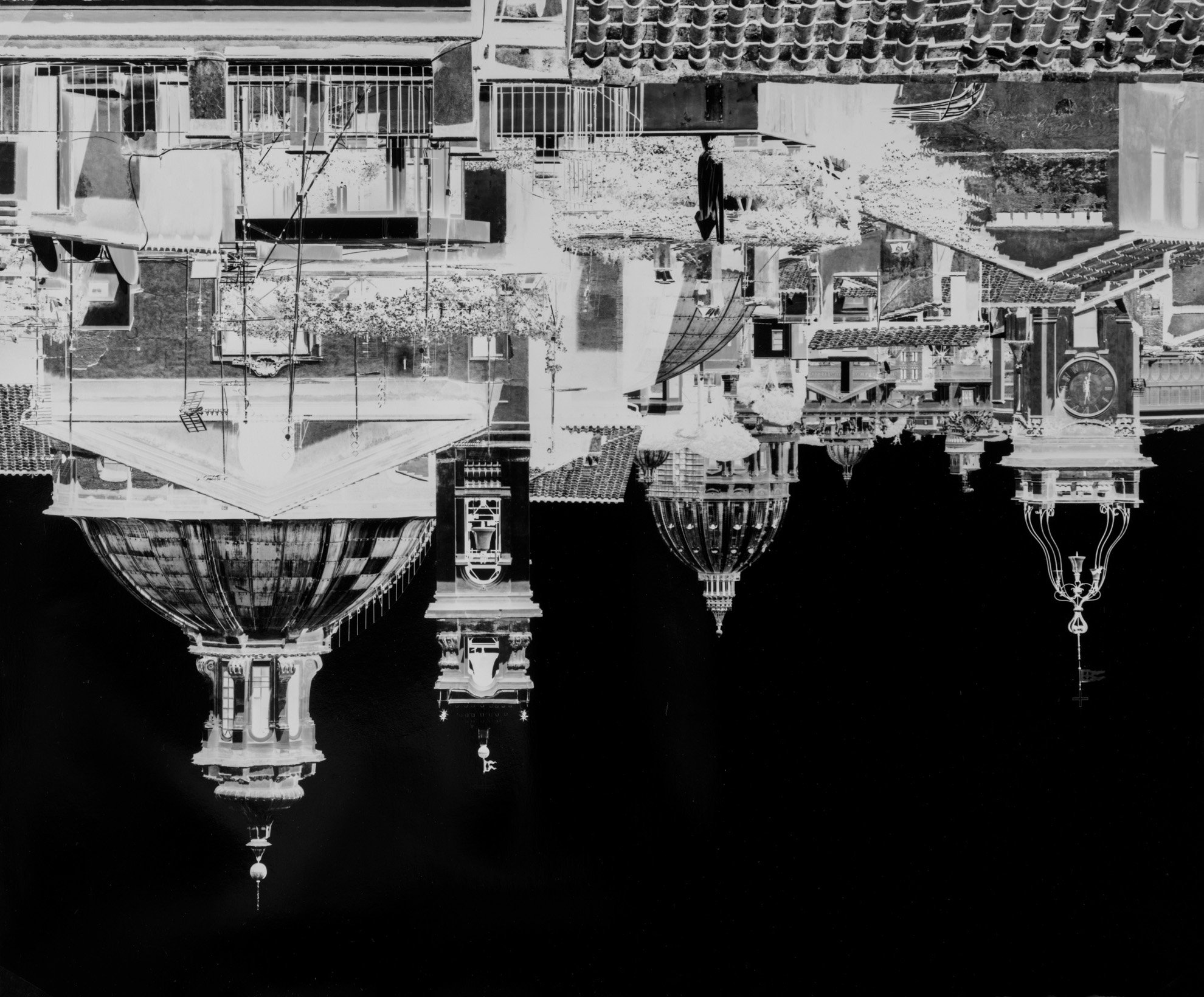
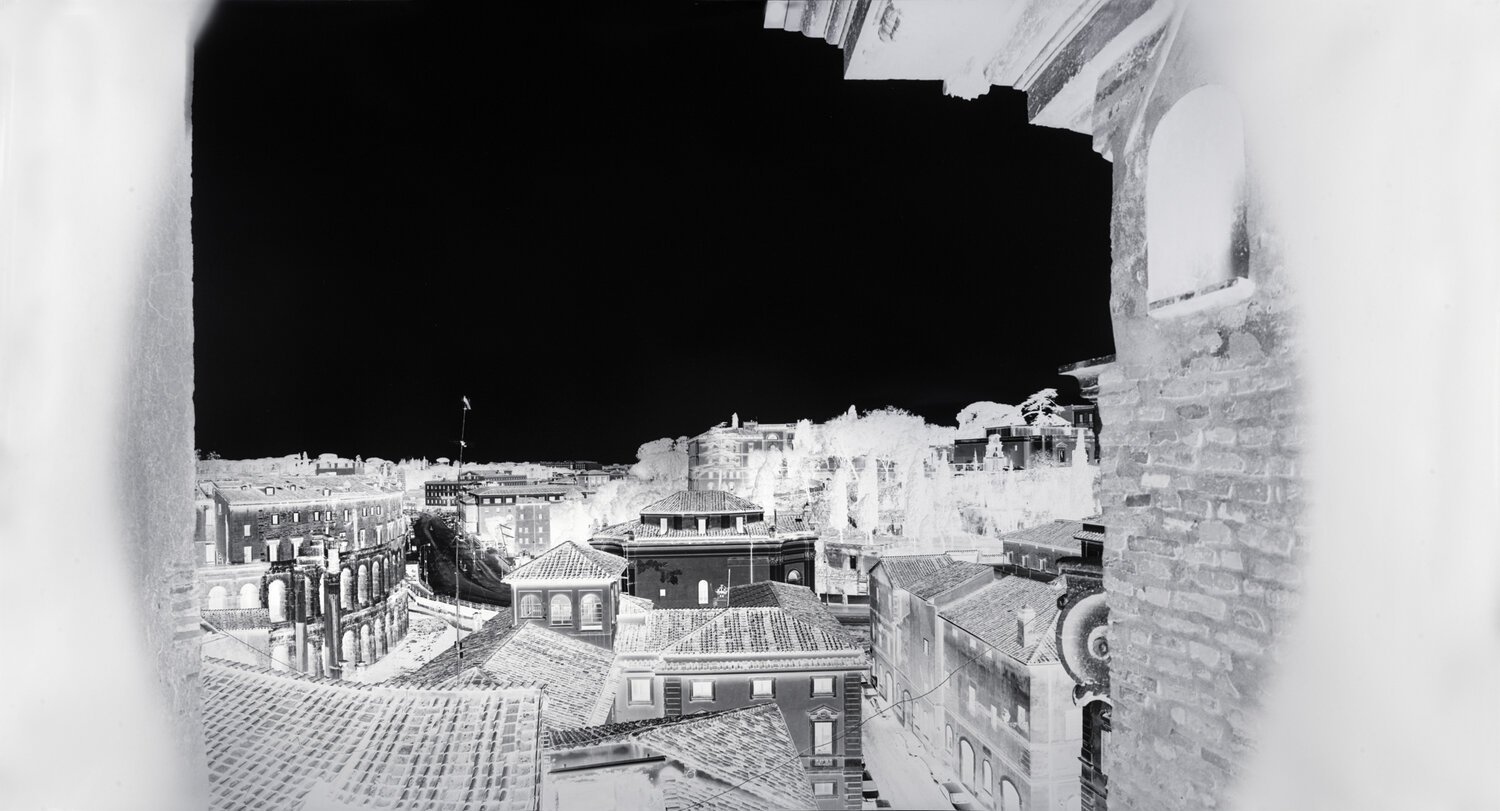
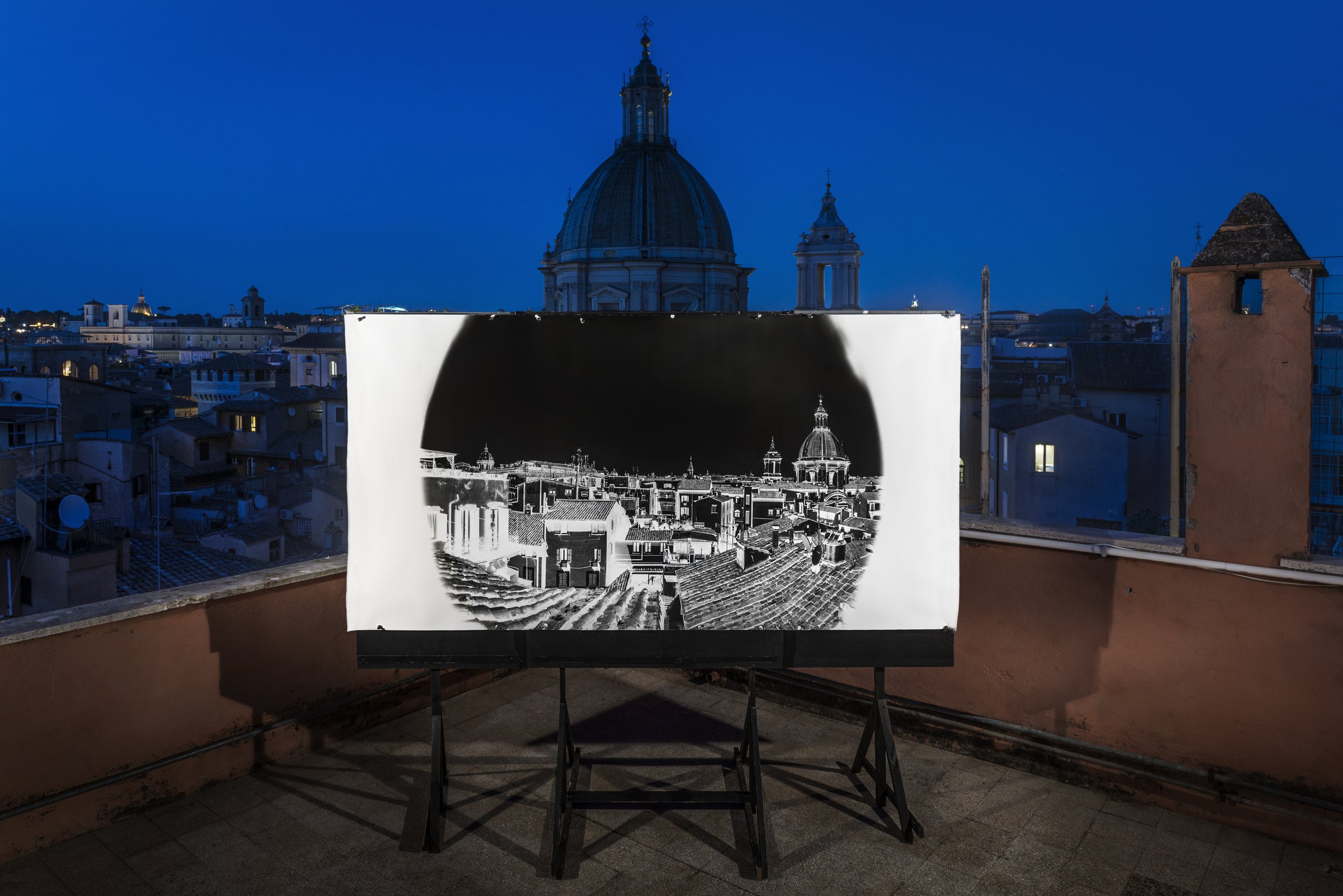
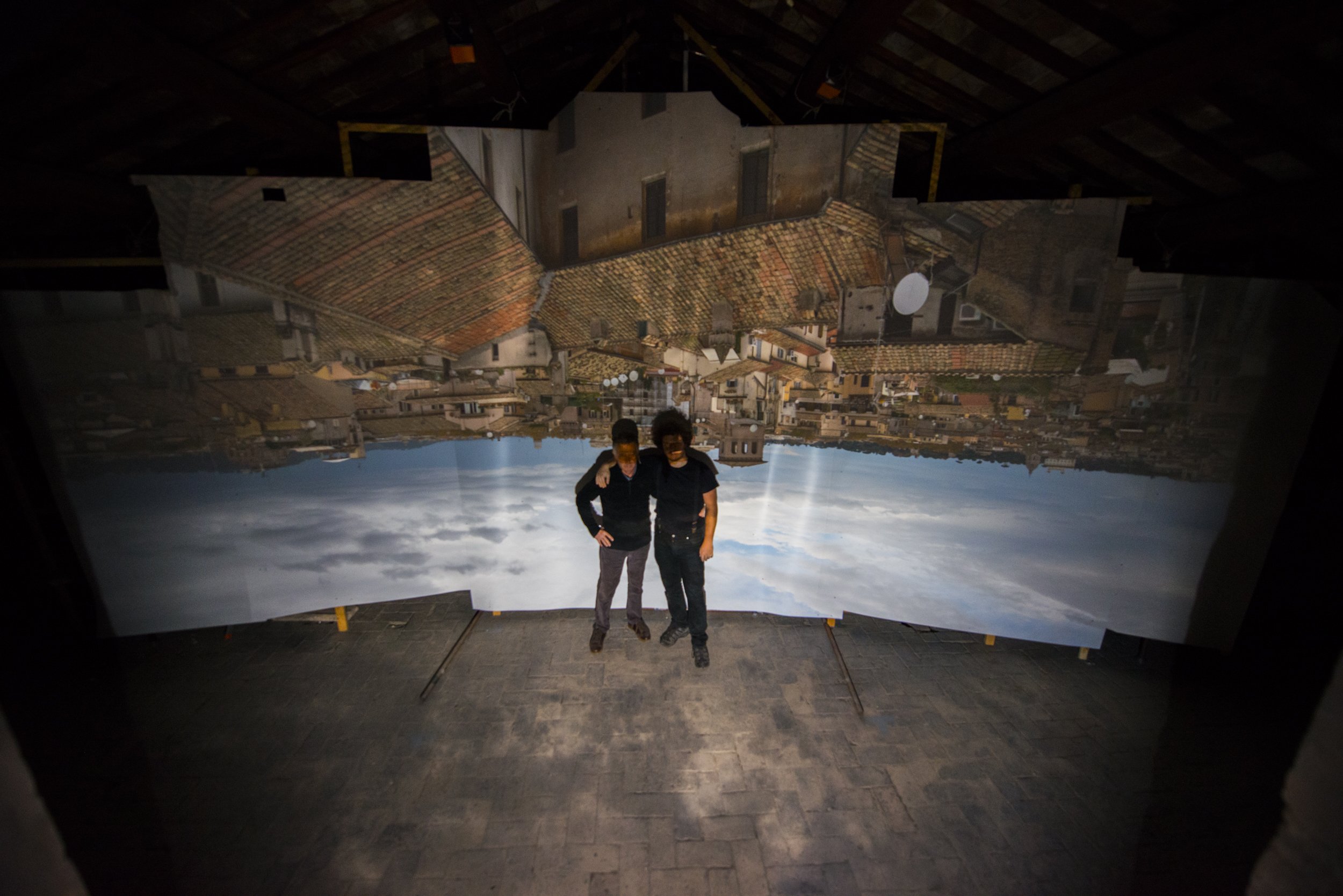
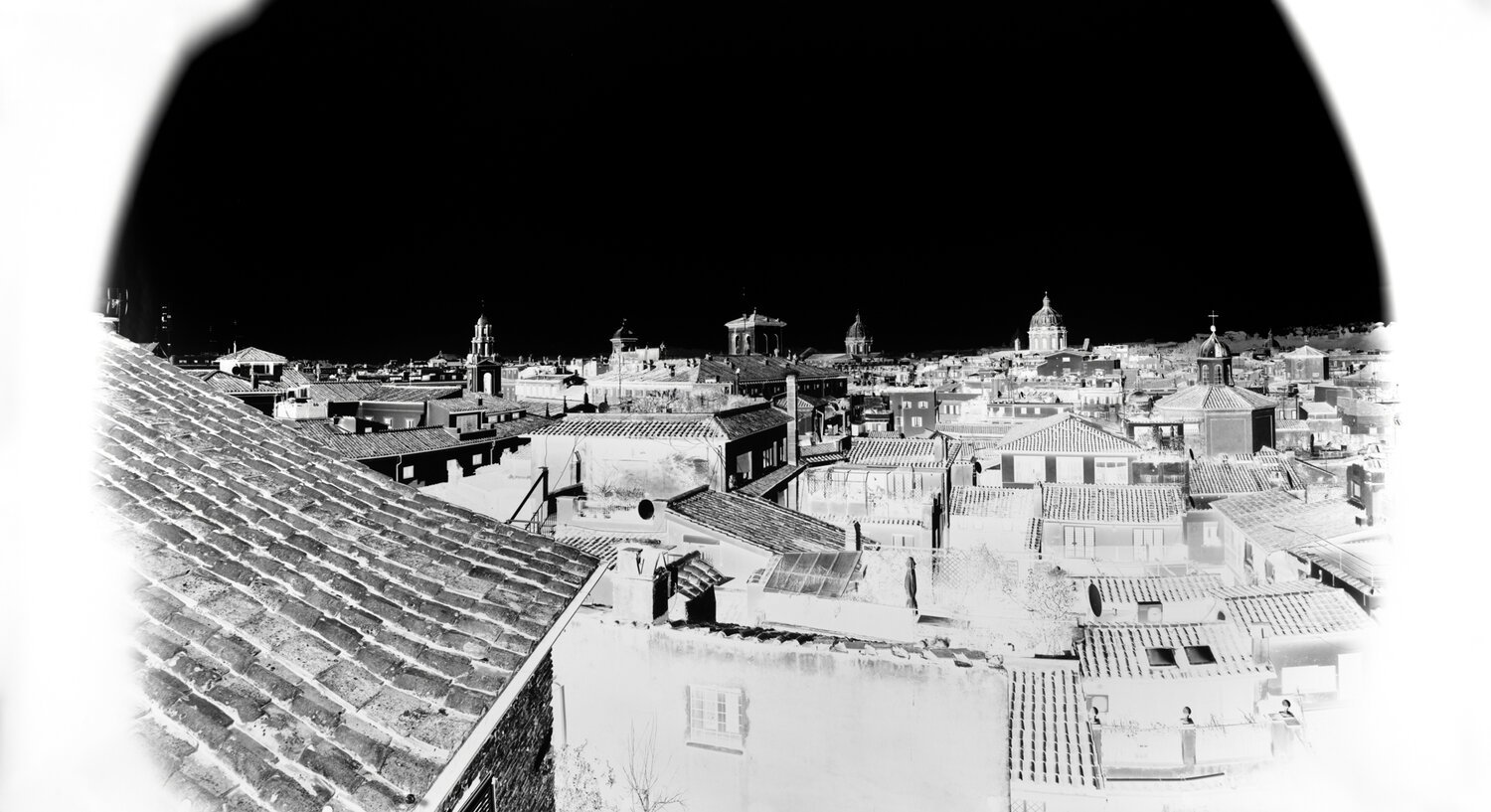
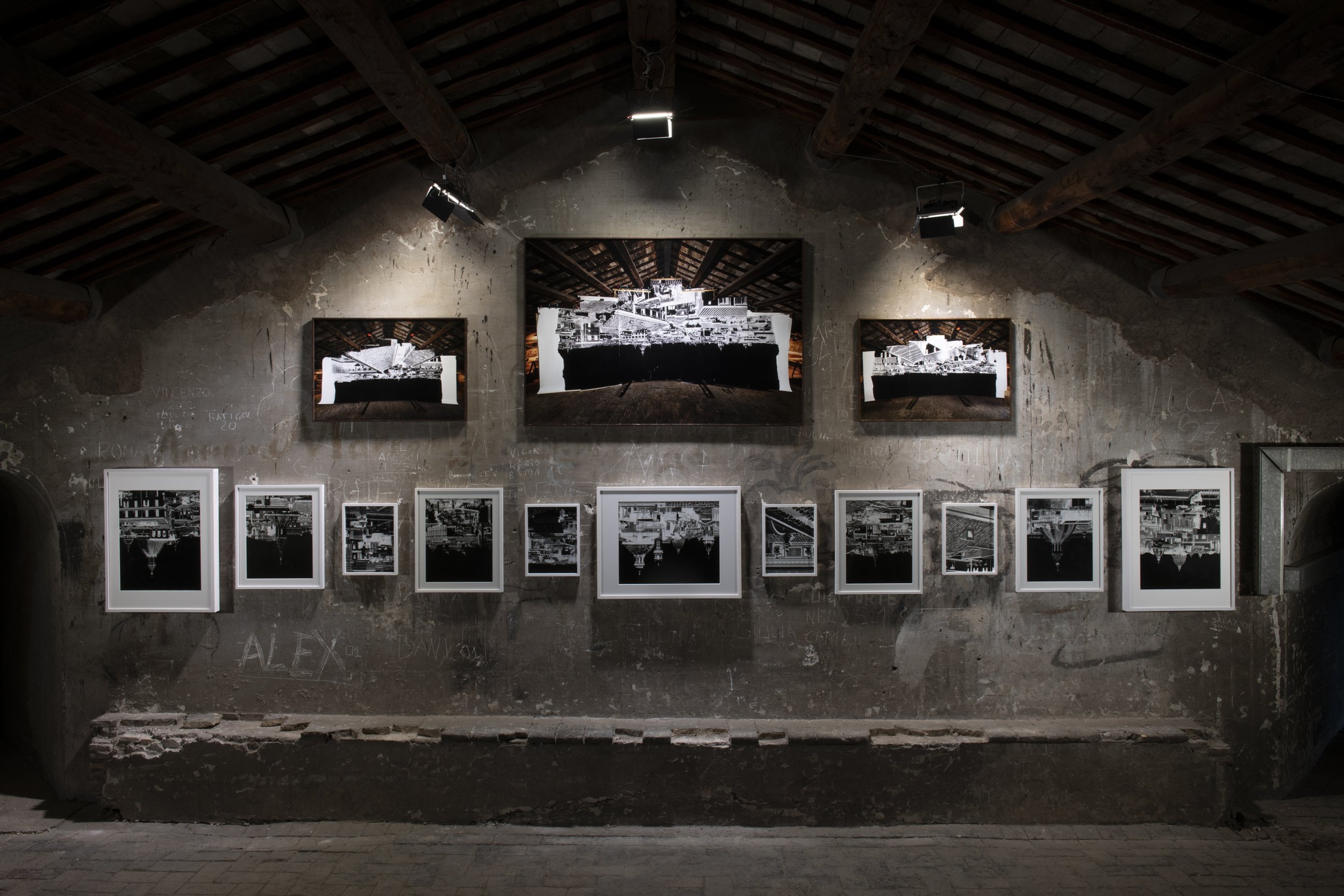
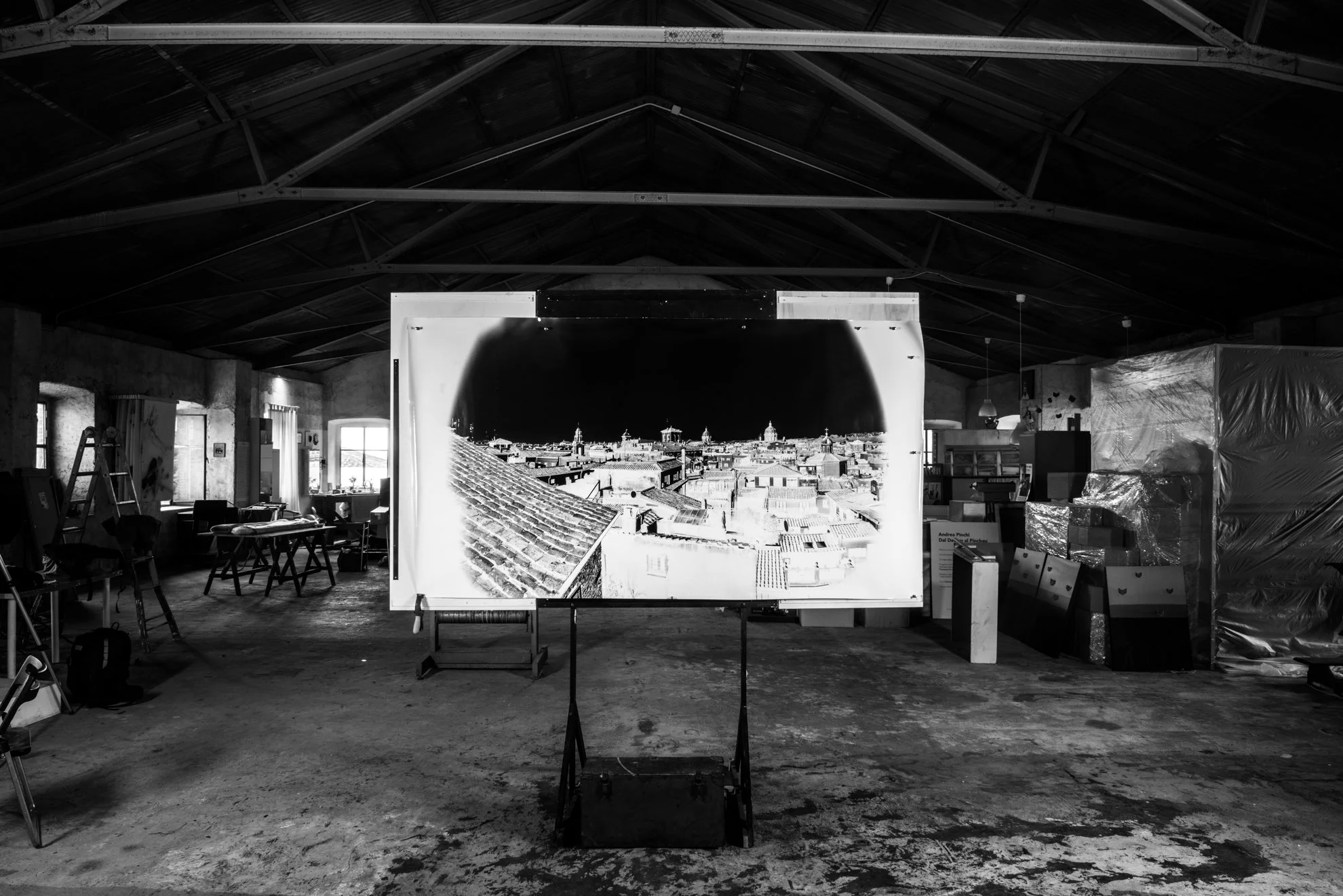
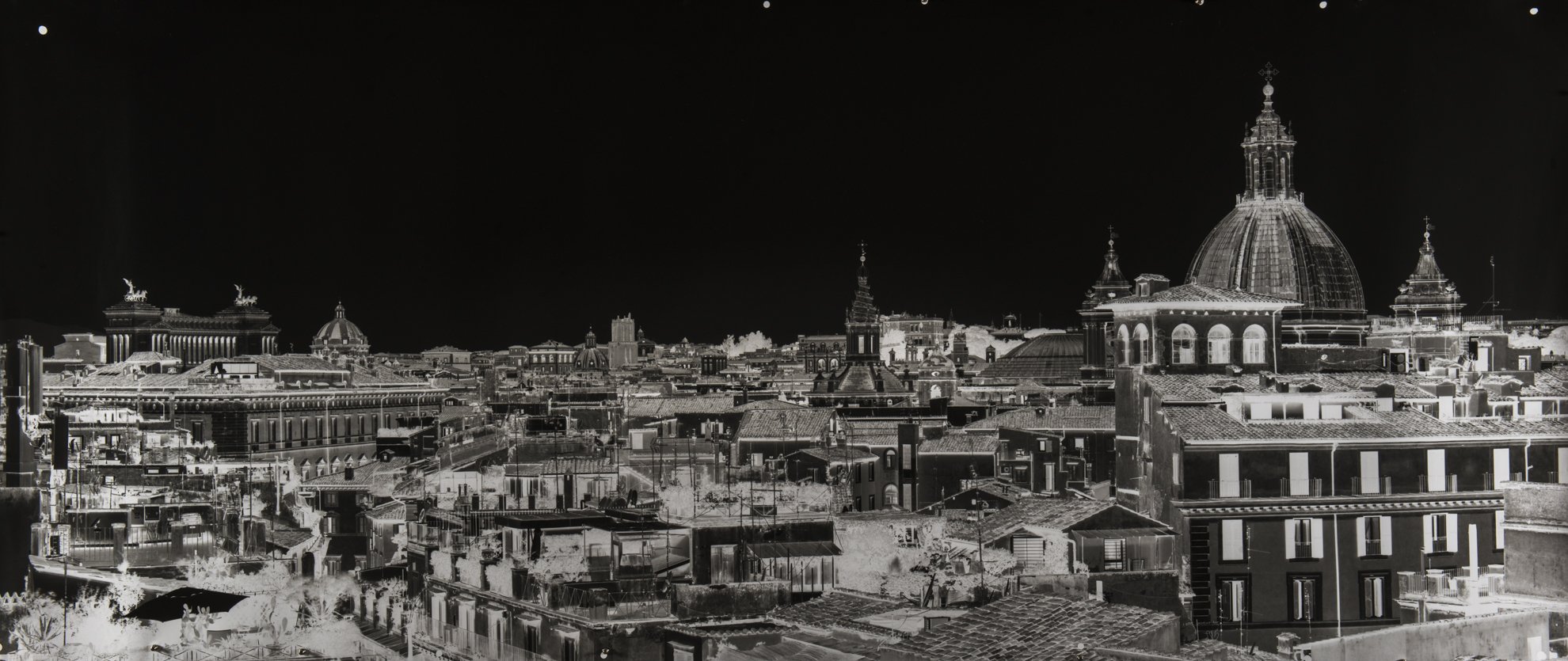
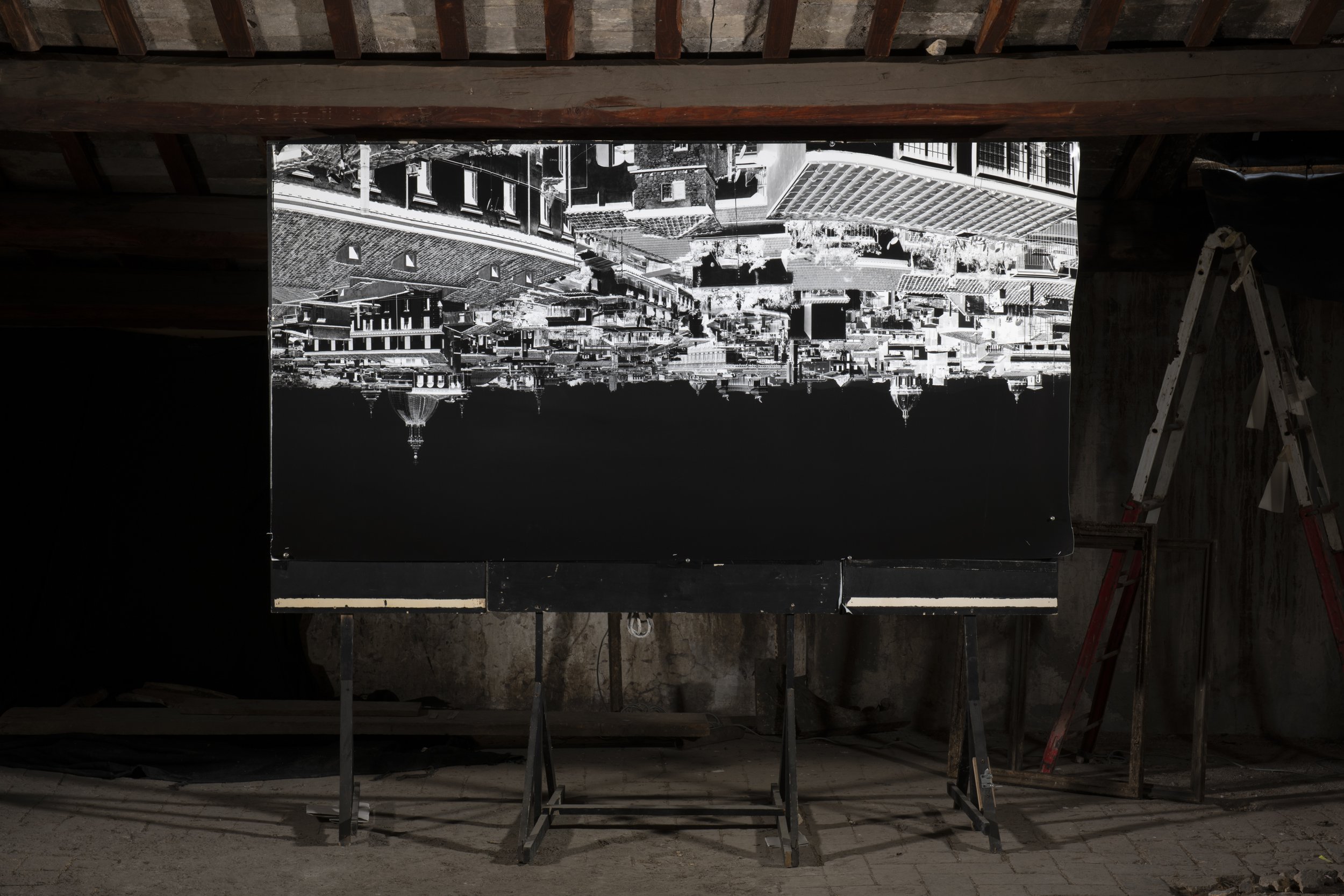
Chiesa Nuova
At the Church of Santa Maria in Vallicella (Chiesa Nuova or the New Church) I created three unique negatives of the city of Rome, from three distinct views of the pediment that overlook the city in a cross shape. The three images together compose a panoramic view spanning 270 degrees, with a total size of 27 meters by 4.5 meters.
Reflections on the project
“Be praised, my Lord, through all your creatures, especially through my lord Brother Sun, who brings the day; and you give light through him. And he is beautiful and radiant in all his splendor! Of you, Most High, he bears the likeness.”
Saint Francis of Assisi, Canticle of the CreaturesLight has always been regarded as a source of illumination, both in a physical and metaphysical sense. It's understood as a revelation that unveils hidden truths and unknown worlds. Throughout history, light has been linked to symbolic meanings in artistic, philosophical, and religious contexts.
In a world saturated with images, at the dawn of the definitive loss of the real referent associated with photographic language, where artificial intelligence paves the way for the production of increasingly standardized new images, my project stands as a tribute to the history of photography, reminding us of the significance of natural light and its potential for revelation.
THE CAMERA OBSCURA
The camera obscura is an optical device that replicates the functioning of the human eye. Within a completely darkened space, light is allowed to filter only through a small aperture. On the opposite wall of the aperture, an image is naturally projected (without the aid of any artificial tools), appearing upside-down and mirrored compared to the external reality.
In 1826, Joseph Nicéphore Niépce completed a series of experiments with a camera obscura capturing the oldest known photograph to date, "View from the Window at Le Gras,".
The operation of modern cameras replicates and refines the very mechanism pioneered by Niépce, adapting it into a high-precision instrument.
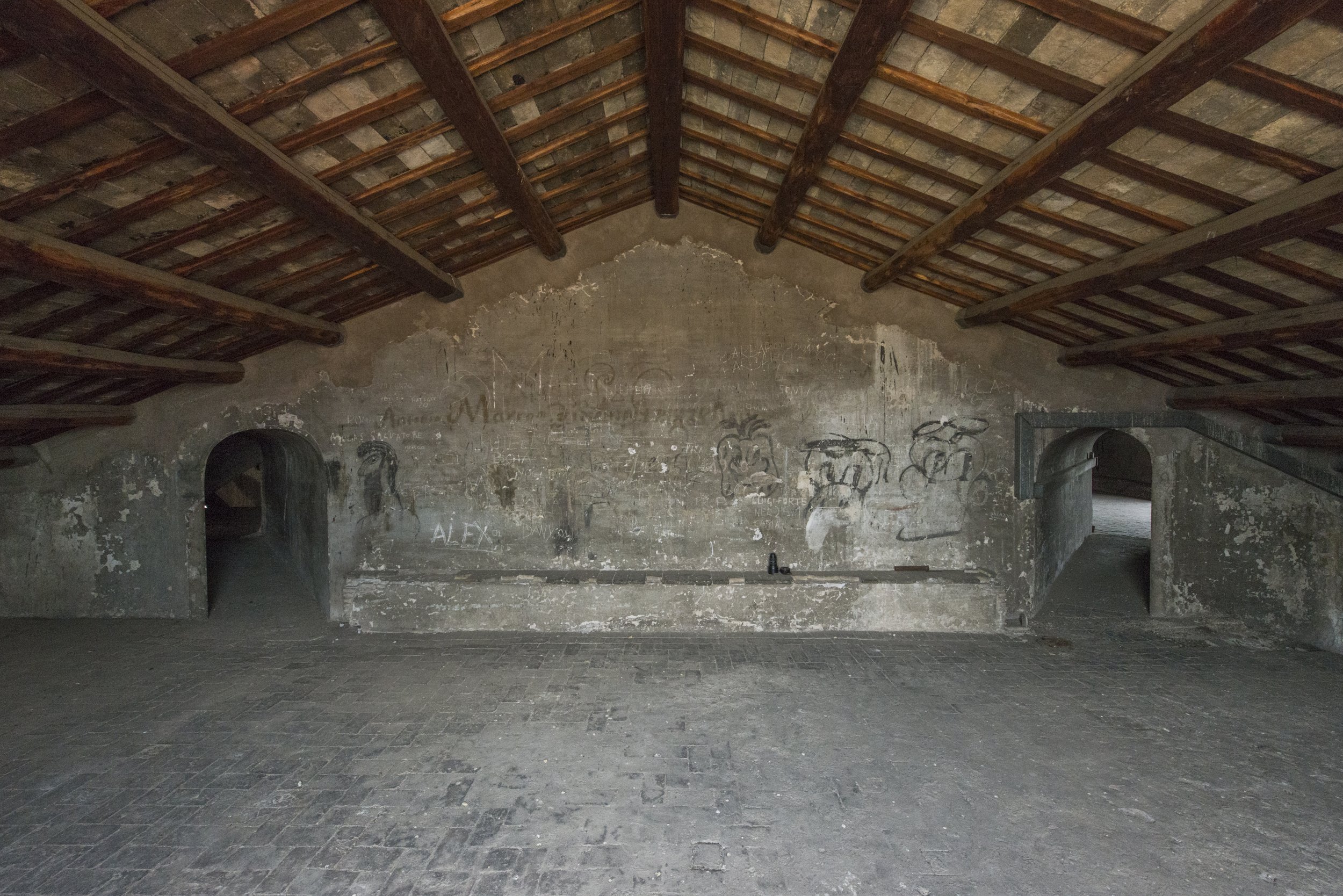
On the rooftops of three distinct historic buildings in the heart of Rome, I have thus far succeeded in executing my installation, converting the entire space into a camera obscura. Within this space, light enters only through a pinhole aperture, projecting the external reality in reverse, in full color and motion, onto photosensitive paper employed to capture large-format photographs.
Specifically, the latest installation, created beneath the roof of the pediment of Chiesa Nuova, has proven to be one of the most engaging professional experiences of my journey due to the significant amount of work required and the outcome that exceeded all expectations.
Through this project, Chiesa Nuova - a sacred 16th-century site - was transformed into an immense camera, where the opening of the shutter (the pinhole aperture) allowed the city of Rome to enter the darkened space and be captured as if each window had become an eye of memory.
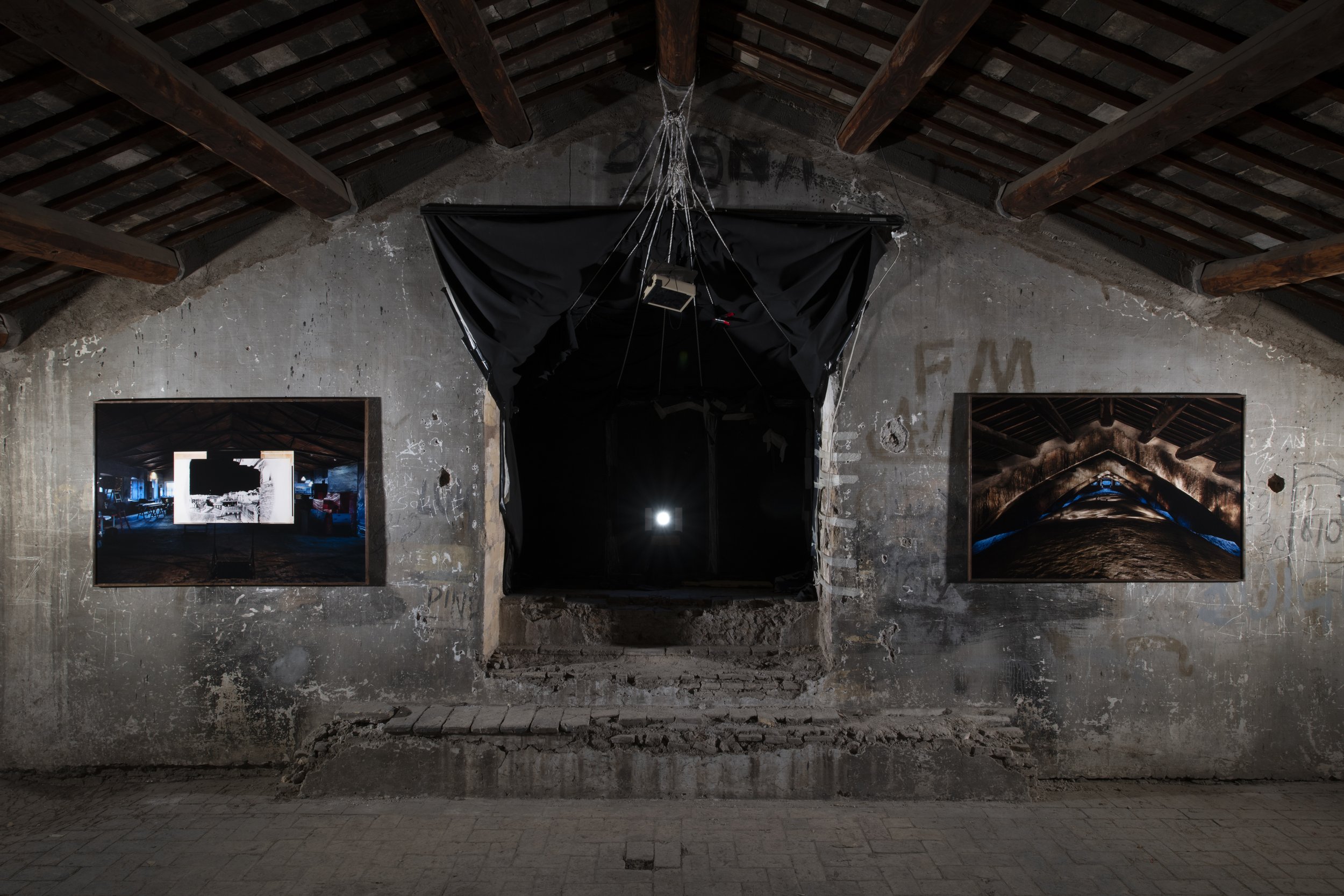
The project is primarily funded by collectors who have purchased prints from the project.
The next step of the project will consist of the creation of a 360-camera obscura involving 16 pinhole cameras, positioned atop the Palatine Hill at the heart of Rome. This location is the point at which Rome is believed to have been founded.







